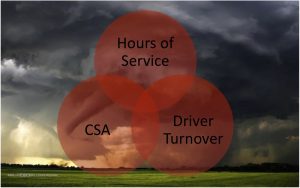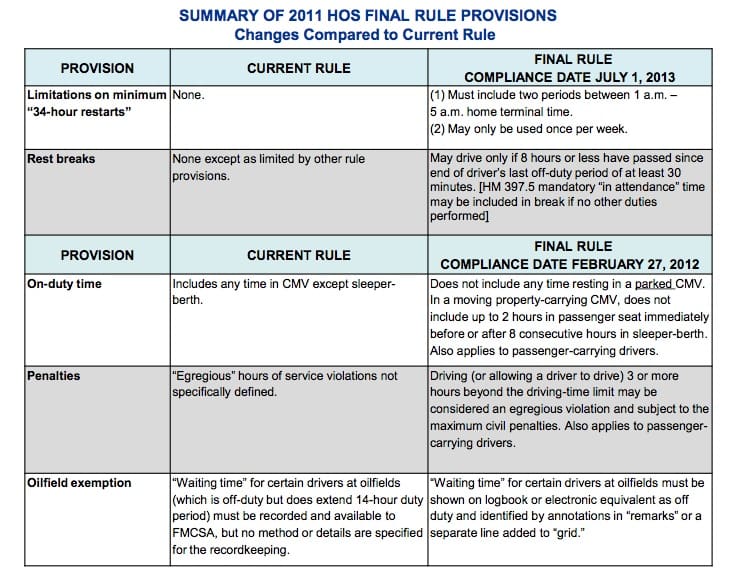Lots of interesting news to discuss today, so let’s go straight to it.
- Descartes Unveils Same-Day Delivery Optimization Technology
- Amazon to Begin Sunday Deliveries, With Post Office’s Help (Wall Street Journal)
- Gap Inc. Pushes Omnichannel Focus (Women’s Wear Daily)
- Freight Shipments Rose 0.8% in September from August
- University of Maryland Selects Resilinc as Supply Chain Risk Partner
- Truckers Tire of Government Sleep Rules (Wall Street Journal)
Lots of news this week related to omni-channel fulfillment and order delivery. First, Descartes unveiled new optimization technology at its user conference that “helps retailers and distributors make deliveries the same day an order is taken.” Here are some details from the press release:
Descartes’ innovative new continuous optimization technology enables dispatchers to receive, automatically assign and execute orders throughout the day, placing pick-up or delivery orders on the routes best suited to meet the customer appointment requirements and operational cost constraints. Using real-time GPS-based fleet statuses Descartes’ same-day delivery optimization technology can more accurately predict new delivery times and drive greater delivery efficiencies.
Descartes’ new same-day optimization technology is part of Descartes’ Route Planner solution, which provides advanced route planning and execution in a single architecture.
In a separate press release, Descartes announced that Sears Holdings Corp. has selected its home delivery solution “to enhance its ability to serve customers and improve the efficiency of its home delivery operations.” According to Jeff Starecheski, Vice President Logistics Services at Sears Holdings, “Customer service is of paramount importance to Sears Holdings, our members and customers. We continue to make investments to remain a leader in home delivery. We chose Descartes’ home delivery solution because of its innovative approach and comprehensive capabilities from delivery appointment scheduling right through to mobile-enabled proof-of-delivery.”
Also this week, news that Amazon and the United States Postal Service (USPS) have partnered to deliver packages to customers on Sundays. The service will begin in Los Angeles and New York on November 17, with plans to expand it to Dallas, New Orleans, Houston, Phoenix, and other cities next year. You can read my commentary from earlier this week for my take on this news, which in a nutshell, is another chess move in the Amazon vs. Brick-and-Mortar match, another chapter in the omni-channel fulfillment story.
And in Women’s Wear Daily, an interesting article highlighting how the Gap is rolling out ship-from-store capabilities across its network, and introducing a new program called “Reserve” where shoppers select items online and have them held in the stores for purchase and pickup. What I found most interesting, however, was something the company developed three years ago:
The foundation [of Gap’s technology-drive strategies] was set three years ago when the company built a search engine that can locate every piece of inventory, which is instrumental in matching the demand with the assortment. That led to last year’s introduction of Gap’s “find in-store” feature on its Web site, which determines where a shopper is and, on a real-time basis, tells them the nearest store to find that item, in the color and size that they want. The Web site also gives the probability of getting the item [emphasis mine]; in other words, whether it’s a certainty, whether the store is down to a few units, or whether it’s not worth the trip since the item is probably no longer available.
What the Gap is doing underscores how mobile and BI/analytics technologies are playing an important role in omni-channel fulfillment — and how the users of inventory management systems are not just the inventory analysts at headquarters or store managers, but also millions of consumers walking around with smartphones and tablets looking to buy an item now.
Shifting gears, I was very pleased to read the news that the Robert H. Smith School of Business at the University of Maryland plans to integrate Resilinc SupplyIntel into its supply chain course curriculum “for the purpose of educating future business leaders on supply chain risk management best practices.” As I’ve written and spoken about many times this year, many companies are falling short on supply chain risk management, which is having a negative impact on their financial performance and eroding their market share. I also believe companies need to rethink supply chain risk management — that is, make thinking about supply chain risk part of their corporate DNA, where conversations about risk are as common and instinctual as conversations about cost and service. Getting these conversations started at the university level with future supply chain leaders is a great step forward.
Finally, there was a great article this week in the Wall Street Journal about Hours of Service and its impact on drivers, which echoed some of the points I raised last week in Hours of Service: The “Obamacare” of the Trucking Industry? The article profiles the experience of Manuel Hernandez, a long-haul truck driver. Here are a couple of notable quotes from the article:
“Who made up these [new HOS] rules,” he asked, shaking his head. “Did they have any experience in driving truck, and traffic and dealing with customers and your breakdowns?”
Mr. Hernandez is required to take 10 consecutive hours of rest to promote a circadian rhythm sleep cycle. The problem with imposing a rule like that on a trucker’s unpredictable schedule, he said, is that “sometimes when you’re not tired, you have to sleep and when you’re tired, you have to drive.”
The article also shed light on an important fact that sometimes gets overlooked: shippers have a big influence on driver productivity too. “On a recent trip from East Rutherford, N.J., to Dallas,” the article reports, “[Mr. Hernandez] could only stand by helplessly and watch as it took eight hours for workers to unload mattress foam by hand from his truck.” And Anne Ferro, FMCSA’s administrator, questioned whether it’s time to rethink the industry’s pricing model: “When you’re getting paid piecework by the mile and the load, you’re incented to drive as much as you can. Are those the incentives we want for somebody who’s driving an 80,000 pound load 60 miles an hour?”
What do you think? Post a comment and share your perspective.
And with that, have a happy weekend!
Song of the Week: “Bleed Out” by Blue October
Note: Descartes is a Logistics Viewpoints sponsor.



















